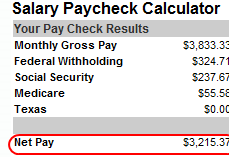 |
Science of fasting |
 |
Periodic fasting and CR prevent aging and rejuvenate the body |
 |
High-protein diet in middle age poses serious health risk |
 |
Treatment of Obesity through fasting |
 |
Management of Diabetes Through Intermittent Fasting |
 |
Longevity Gene: Another scientific step towards longer lives |
 |
Cholesterol Lowering Drug Statin Can Extend Lives of Cancer Patients |
 |
Fasting cycles retard growth of tumors |
 |
Intermittent Fasting for Prevention Obesity and Diabetes by |
 |
New compound in red wine (piceatannol) staves off obesity |
The mind-body link however is now becoming more understood in terms of its detailed mechanisms (e.g. hormonal control mechanisms). There is no doubt that apparently subjective concepts like "well-being" and "relaxation" really do have important practical health and longevity consequences.
The logical conclusion would appear to be that it is well worth paying attention to factors like relaxation, if one has any opportunity to do this. (It is worth recalling that virtually every traditional society has its quota of prescribed festival-days.)
And, given the well-proven benefits of fasting (detailed in other sections), it certainly makes sense to get the best value from one's (usually strictly limited) free time by combining a supervised training in this and related techniques with a relaxing holiday in attractive surroundings.
How much does the Average American Make? Breaking Down the U.S. Household Income Numbers (2008).
How much does the typical American family make? This question is probably one of the most central in figuring out how we can go about fixing our current economic malaise. After all, we don’t hear many people saying in today’s world that they have too much money.
The median household income in the United States is $46,326. Here in California people have a hard time understanding that yes, 50 percent of our population live on $46,000 or less a year. Even today, all the elixirs and remedies being thrown around fail to focus on income and the big brother of income, solid employment. Dual earner households have a higher median income at $67,348.
To highlight the massive discrepancy I’ve put together a chart showing the household income distribution:

As you can see from the above chart, only 17.8% of all U.S. households make more than $118,200 a year. Only 2.67% make more than $200,000. The fact that only 34% make more than $65,000 is astounding given how expensive other cost of living items have gotten over the past decade. That is why the middle class is feeling squeezed from all different sides.
When I put together a budget for a family making $100,000 I received a bit of feedback on both sides. Even though I realized very few people had household incomes in the 6 figure range looking very closely at the data, I can understand why people took issue with a budget that was at that level. I also put together a budget from someone living in California making $46,000 a year and received feedback as well. I think when it comes to income, you can never have too much.
What is even more fascinating, is how even amongst the super wealthy income is not distributed evenly. There are approximately 146,000 (0.1%) households with incomes exceeding $1,500,000 a year. Even at that, the top 0.01% of households had incomes of $5,500,000 and accounted for 11,000 households. The 400 highest tax payers in the nation brought in a stunning $87,000,000 a year. Now that is wealth.
For us mere mortals, it is important again to focus on that chart. $46,000 does not go a long way. In a recent Census report there are 110,000,000 households in the United States. What this data tells us is that 55,000,000 households are living on $46,000 or less a year. Let us assume this is a married couple with 1 child. Let us run the numbers:

I ran the numbers for a state with no state income taxes, Texas. A family at this level is only bringing in $3,215 a month. The national median home price peaked around $200,000. So let us assume this family purchased the median home:
5% down payment: $10,000
Mortgage 30-year fixed (6.5%): $1,200
Taxes and Insurance: $333
PITI: $1,533
Right off the bat, this family is spending 47% of their net pay on a median priced home. We didn’t even account for any pre-tax retirement account investing. Given the recent stock market performance and the loss of $50 trillion in global wealth, maybe that wasn’t such a bad idea. The bottom line is the average American family is being squeezed from every angle. What we need is a focus on jobs and our economy, not bailing out banks. That defeats the entire purpose. The average American family is struggling getting by and when they hear about these billion dollar handouts, they can’t help but to feel left out.
Fasting and Calorie restriction anti-aging life style - your route to prosperity!
We are not experts in "how to prosper" and it is not our business to give you financial advice. But we do suggest that you probably have great potential which at present is unused. Fasting may not give you instant prosperity; but from experience it is predictable that it will clear your brain and give you "more smarts". And a cool head and sharper brain, combined with general good health, may well help you to achieve success which formerly eluded you.
Scientific evidence:
Women With High Job Strain Have 40 Percent Increased Risk of Heart Disease, Study Finds
Women who report having high job strain have a 40 percent increased risk of cardiovascular disease, including heart attacks and the need for procedures to open blocked arteries, compared to those with low job strain, according to research presented at the American Heart Association's Scientific Sessions 2010.
In addition, job insecurity -- fear of losing one's job -- was associated with risk factors for cardiovascular disease such as high blood pressure, increased cholesterol and excess body weight. However, it'snot directly associated with heart attacks, stroke, invasive heart procedures or cardiovascular death, researchers said.
Job strain, a form of psychological stress, is defined as having a demanding job, but little to no decision-making authority or opportunities to use one's creative or individual skills.
"Our study indicates that there are both immediate and long-term clinically documented cardiovascular health effects of job strain in women," said Michelle A. Albert, M.D., M.P.H., the study's senior author and associate physician at Brigham and Women's Hospital, Boston, Mass. "Your job can positively and negatively affect health, making it important to pay attention to the stresses of your job as part of your total health package."
Researchers analyzed job strain in 17,415 healthy women who participated in the landmark Women's Health Study. The women were primarily Caucasian health professionals, average age 57 who provided information about heart disease risk factors, job strain and job insecurity. They were followed for more than 10 years to track the development of cardiovascular disease. Researchers used a standard questionnaire to evaluate job strain and job insecurity with statements such as: "My job requires working very fast." "My job requires working very hard." "I am free from competing demands that others make."
The 40 percent higher risks for women who reported high job strain included heart attacks, ischemic strokes, coronary artery bypass surgery or balloon angioplasty and death. The increased risk of heart attack was about 88 percent, while the risk of bypass surgery or invasive procedure was about 43 percent.
"Women in jobs characterized by high demands and low control, as well as jobs with high demands but a high sense of control are at higher risk for heart disease long term," said Natalie Slopen, Sc.D., lead researcher and a postdoctoral research fellow at Harvard University Center on the Developing Child in Boston.
Previous research on the effects of job strain has focused on men and had a more restricted set of cardiovascular conditions. "From a public health perspective, it's crucial for employers, potential patients, as well as government and hospitals entities to monitor perceived employee job strain and initiate programs to alleviate job strain and perhaps positively impact prevention of heart disease," Albert said.
fasting, prosperity, wealth, household income, life quality, well-being, relaxation, longevity, standards of living.














